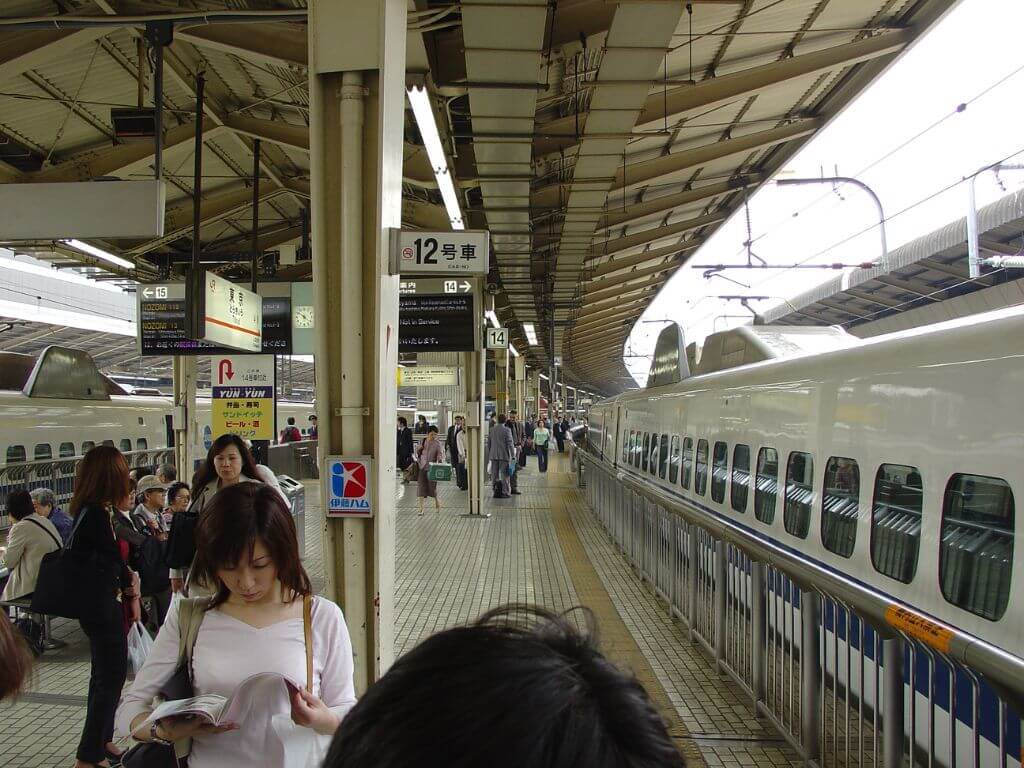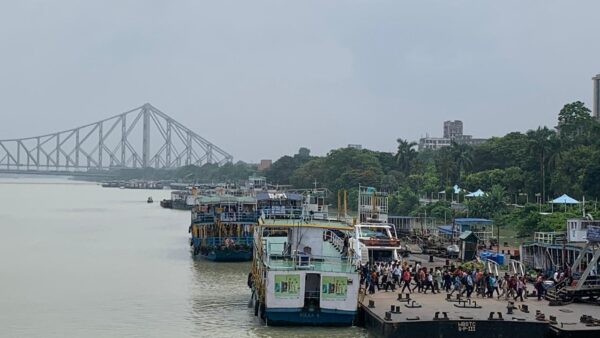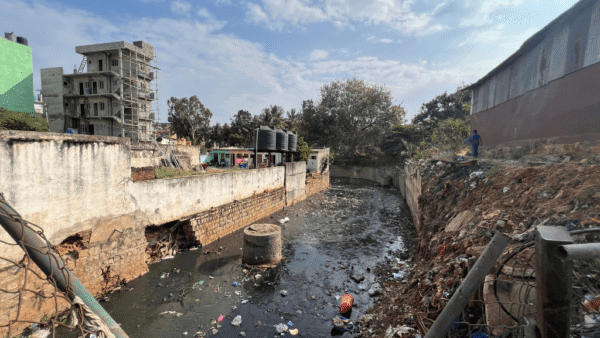India’s cities, which used to rely on public transport or intermediate transport such as rickshaws or non-motorised bicycles, have steadily shifted to private automobiles in the past two decades. This has resulted in higher emissions which, in turn, have enveloped cities with air pollution resulting in health problems for people, road congestion as the road length has not kept pace with the growth spurts in the number of private vehicles – both cars and two-wheelers – and a rising number of injuries and fatalities in road accidents.
Precious space in cities is being used for parking private vehicles which, compared with public transport, are less efficient in carrying capacity. For sustainable and climate-resilient cities, India’s fast-growing cities will have to circle back to public transport and make it as multi-modal as possible. All modes of public transport – trains, buses, metros, ferries, bicycle paths, walking infrastructure – have to be made more accessible and available to all categories of commuters, cleaner fuels have to be used in all vehicles, and parking woes have to be addressed.
When cities give importance to public transport, it translates into fewer private cars on roads which, in turn, means less emissions and air pollution, and fewer accidents. It also results in faster travel, given the fewer vehicles occupying road space, and often subsidised enough to be accessed by most people. Cities, such as Kochi along Kerala’s coast, Budapest along the Danube river, Delhi along the Yamuna, and Shanghai along the Yangtze traditionally used water-based transport but these are fast disappearing. Even these cities, alongside new and modern cities, are now increasingly automobile-based with long road lengths, many flyovers and bridges leading, unsurprisingly, to a rise in private transport.
This reflects the urban planning paradigm which has allocated more and more space for private cars. “The iron law of transportation is: If you build it, they will come. Build highways and wide streets, and cars fill in, but build an efficient subway, or streetcar, or bus rapid transit and transit riders will show up. Install bike paths, and people ride bikes. Make a street vibrant, safe, and shaded, and walkers arrive.” says Hal Harvey, chief executive of a nonpartisan climate policy firm, Enervy Innovation.[1]
Here are some cities around the world with efficient public transport systems that are worth replicating for a sustainable future.
Helsinki
Public transit is the most efficient and sustainable way for cities to transport large groups of people compared to private means; an efficiently run system can encourage workers and tourists to travel through cities, and provide more equal opportunity access to additional mobility modes, jobs, shopping centres, and more.[2]
Finland’s capital and its largest city, Helsinki, is an example of being “prepared for the future of urban mobility, according to a new assessment. Apart from this, including Amsterdam, Stockholm and Munich, all boast robust public transit networks and have also emerged as leaders in transitioning away from fossil fuels,” says this piece.[3]
People-centric and eco-friendly city designing have made way for more public amenities, especially transport, vital for residents and tourists alike.
Tokyo
The Japanese public transport is known for being advanced, efficient and punctual. Tokyo has a dense network of train, subway and bus lines, which are operated by about a dozen companies. Subways and trains offer seamless travel and are most preferred by commuters. Tokyo’s public transport is well-maintained and easy to use, making it the third best in the world.[4]
Every year, Tokyo’s railway system carries around 14 billion passengers and is a key part of the great city’s transport network. Eleven of the world’s 20 busiest stations are in Japan.
“Cities around the world admire the engineering and infrastructure of this metropolis. Tokyo’s public transport map has proven to be one of the best ways to build a city, given its low environmental impact, the enormous volume of people it transports and its low cost.”[5]
Tokyo is also seeing an increase in multilingual signage across its public transportation, along with having a JR Pass (for tourists) or travel card, that lets you navigate trains, monorails, ferries, and buses with ease.
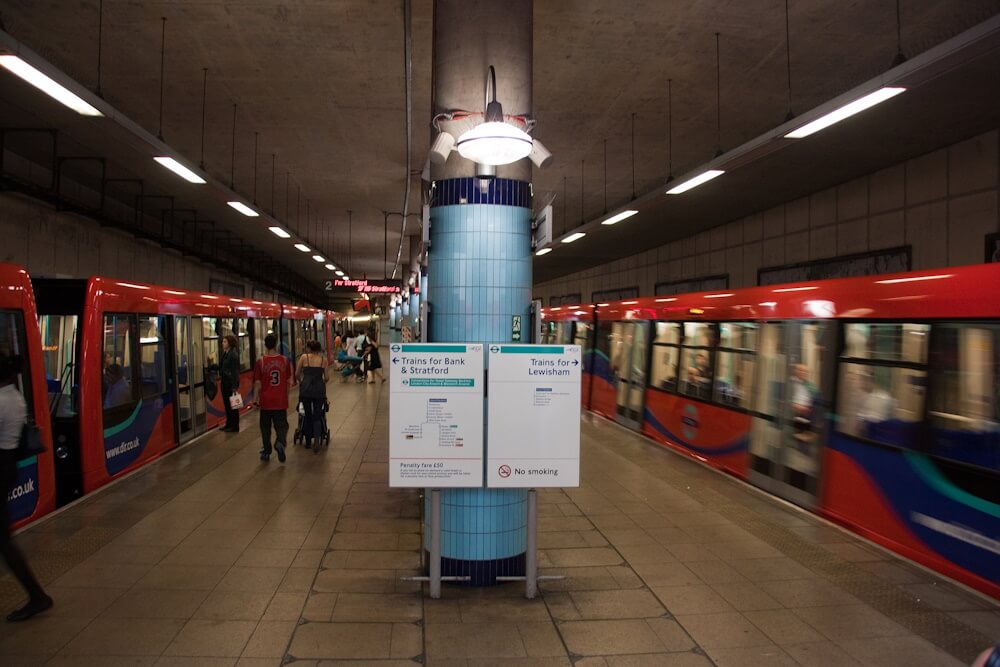
Photo: Wikimedia Commons
London
The largest city in the United Kingdom, London, offers an easy and accessible way to move around the city through the iconic London Underground that dates back to 1863 but has been upgraded, and an efficient network of buses, both allowing commuters to access even the remotest parts of the city.
The London Underground is one of the most well-known public transportation systems in the world serving Greater London and part of the Buckinghamshire, Essex, and Hertfordshire counties. It was the world’s first underground metro and its 270 stations now service about 5 million daily riders and 1.35 billion annual riders.[6]
The Docklands Light Railway, a pioneer of urban light-metro travel, links the regenerated Docklands area of London with the City – it also serves London City Airport. The Night Tube gives one the option of cheap travel during a night out and saves on the expensive taxi ride.
London is also known for its ubiquitous red double-decker buses. “Riding on a London bus is the best way to see the sights while travelling from A to B. Buses accept Oyster or contactless payment only (no cash) and it costs £1.50 for a single journey. The swish new Hopper fare gets you unlimited bus and tram rides within one hour of touching in. And if you travel on certain routes, you’ll board one of the fancy new electric buses, equipped with digital route maps and USB sockets.”[7]
While this British capital is high on the most congested cities list, London has seen a decrease in its car traffic flow by 10 percent in the last decade.[8] A scheme levies a £15 daily charge if commuters drive within the Congestion Charge zone. Introduced in 2003, this has since discouraged travel by private vehicles. As of December 2023, ministers and Transport for London have agreed to a 250 million pound in funds[9] to improve London’s transport system.
Bogota, Colombia
The most cited example of a public transport model made successful is the Bus Rapid Transit System (BRTS). The TransMilenio is a very fast and efficient way of getting around Bogotá, the capital of Colombia. One of the greatest benefits of using TransMilenio is that commuters can bypass most of Bogotá´s infamous traffic jams.
Back in 1999, Bogota’s mayor, Enrique Peñalosa, proposed the BRTS plan to improve the efficiency and safety of public passenger transport services and provide access to the urban poor, enhance private sector involvement in service provision, reduce greenhouse gas emissions and air pollution, and lay the foundation for a comprehensive urban development process for the city.[10]
Today, the TransMilenio network serves about 2 million commuters a day. The mayors following Peñalosa seemed to neglect the system and the buses aged without replacement. However, Bogota never saw the original 71 miles grow into 241 miles, still suffering from gridlocks.[11]
Madrid, Spain
Madrid’s public transportation of metro, light metro rails, commuter rails, and buses rank the city high in seamless mobility. It is safe, clean and quite affordable. Its transformative approach to sustainable urban mobility is an effort towards a cleaner and healthier urban environment. The eco-friendly electric buses aim at reducing pollution. The Madrid metro and bus systems are integrated, allowing one to access the Madrid metro lines and the Empresa Municipal de Transportes de Madrid (EMT) bus lines with the same ‘ticket’.
Last year, Madrid launched its first bus rapid transit (BRT) service, connecting two key neighbourhoods, aiming to reduce travel time from 50 to 30 minutes. In an interview, Dolores Ortiz Sanchez, Director General of Mobility at Madrid City Council, says: “We are actively promoting the transition to public transportation, discouraging the use of private vehicles. To this end, we have implemented complimentary travel days for buses…The success of these designated days is evident in our record-high bus occupancy rates, showcasing a positive response to our new fleet of electric buses. These environmentally friendly vehicles not only contribute to a pollution-free environment, but also reduce traffic congestion.”[12]
Of all the systems analyzed in the McKinsey report, Madrid touts the greatest coverage — more than 89 percent of the population is within a 1-kilometer radius from a station.[13]
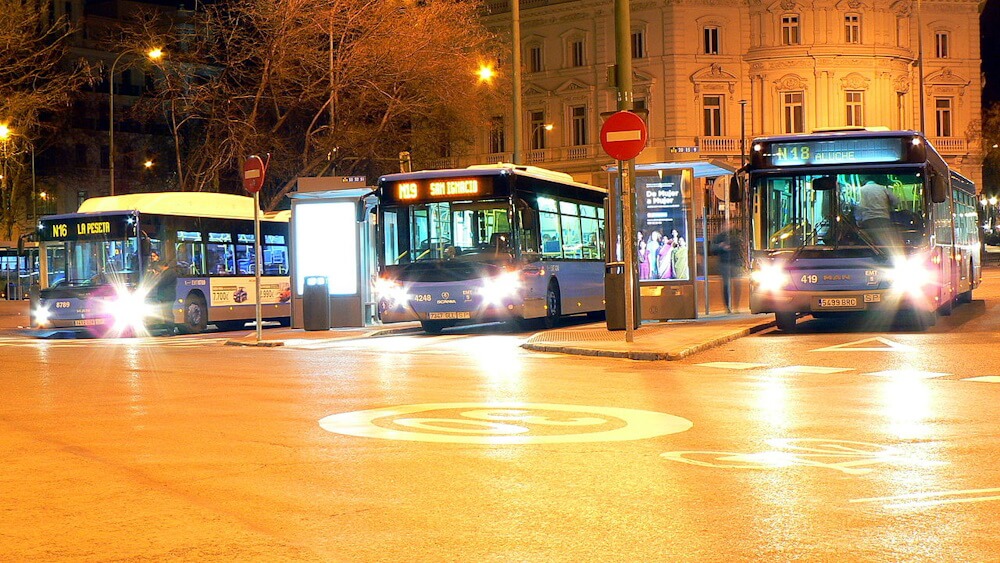
Photo: Wikimedia Commons
Amsterdam, the Netherlands
The city’s public transport includes a network of trains, trams, buses and ferries — one of the most efficient and relatively economical transit systems in the world. The city is claimed by cyclists more than by car users, and Amsterdam has successfully warded off any plans to give more space to cars.
“Exploring the city by bus, metro, or tram is easy as the lines snake throughout the city and the vehicles arrive frequently. Most importantly, they arrive on time – this seems to be rare except in a city such as London. I suspect it is due to the fact that Amsterdam is a relatively carless city. Yes, there are vehicles on every street, but the vast majority of the people you see are not driving – they are walking, biking, or riding public transit. This clears up space on the roads and leads to fewer transit delays, making public transit not only the most sustainable choice for travellers but the most convenient one as well,” writes blogger Alyssa.[14]
Singapore
The city-state’s people-oriented approach has boosted the use of mass rapid transport (MRT) system, or the rail metro system, and Light Rapid Transit — which have emerged as the lifeline. The super-efficient public transport in Singapore, along with its taxation laws for owning private vehicles,[15] has been instrumental in reducing private car usage.
Their car-lite policy has reduced car ownership by one-third, which is down from 40 percent in 2013.[16] As of 2022, there were a total number of 9,95,000 motor vehicles in Singapore, for a population of 6 million. With the city requiring citizens to purchase a Certificate of Entitlement (COE) before buying a vehicle, which can cost upwards of Rs.63 lakh.[17]
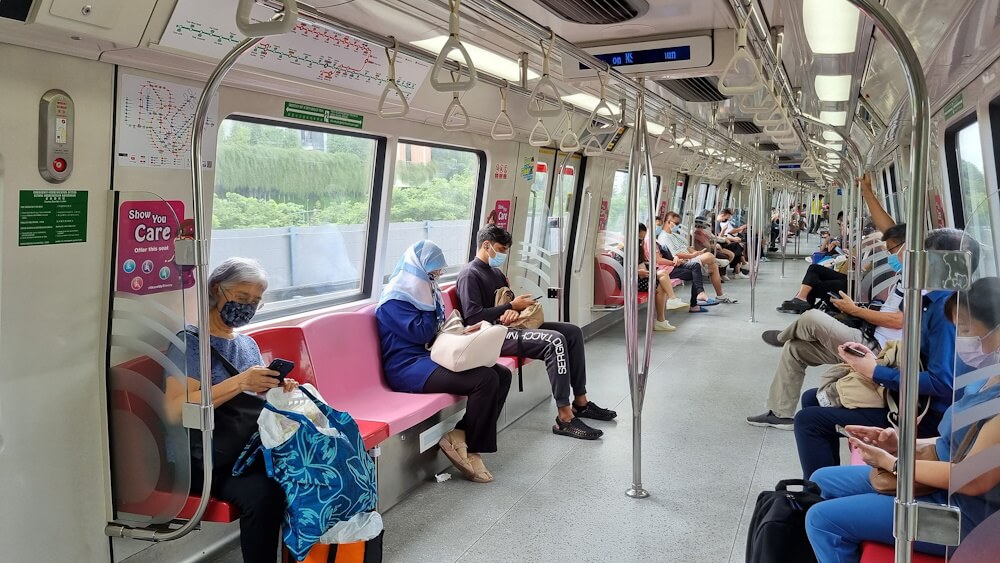
Photo: Wikimedia Commons
According to a McKinsey report,[18] “Singapore, Hong Kong and Paris have much lower rates of public transit fatalities per one million people as compared to other cities”, highlighting Singapore as a “notable example in achieving high results…including affordability”. This city-state uses 400+ cameras to monitor and manage traffic, and determines congestion charges dynamically based on traffic flow and time of day.
The government’s objective is to achieve 75 percent of peak-period travels through public transport by 2030, an increase from the current 64 percent.[19]
Hong Kong
The city-state is known for its fleet of double-decker trams, one of the cheapest ways to travel. It’s popular for its Mass Transit Railway (MTR), which sees 9.7 million passenger trips every day. The efficiency, affordability, and accessibility of Hong Kong’s public transit makes it a model for authorities.
“The tiling of each station is colour-coded, the trains are air-conditioned – a merciful release, given the climate – and Wi-Fi is freely available in all the carriages. Even during rush hour at Admiralty, the hub of Hong Kong’s legal sector, the exceedingly wide platforms easily distribute the large crowds. And the frequent – and rarely late – trains mean peak hours are no true impediment to travelling.”[20]
Of the 8,10,383 vehicles licensed in Hong Kong at the end of 2022, about 5,71,400 were private cars.[21] But Hong Kong island has four major public transport organisations – New World First Bus Services (NWFB), Citybus, HongKong Tramways, and the MTR Corporation. According to a transport survey conducted in 2022, ridership in the MTR decreased by 9.5 percent, dropping from 140.4 million to 127 million. Similarly, the NWFB and Citybus saw a decrease of 13.7 percent, and the tramways an 11 percent.
Paris, France
Travelling around Paris is famed for its ease and accessibility with a number of affordable transport options that are provided in the French capital. It was named the world’s top city for public transit in the William Russell’s Global Transport Index 2023.
The city has added to its public transport menu with the 10 electric scooter schemes which are free-floating. The scooters can be hired anywhere in the city and dropped off anywhere without needing a docking station.
According to 2022 data from Statista, almost 70 percent of residents living in the French capital use the metro, buses or suburban trains to commute to work, compared to 40.7 percent of employees in Lyon, the third most populous city in France.
Paris has low public transport costs with the average ticket costing just £1.85, which is relatively inexpensive considering the cost of living in the city is among the highest in the world.[22]
The worst cities for public transport
Not all cities have the funds nor a stable political atmosphere to maintain a sustainable transport system. Here are some of the cities across the world struggling to make public transport safe and accessible to all.
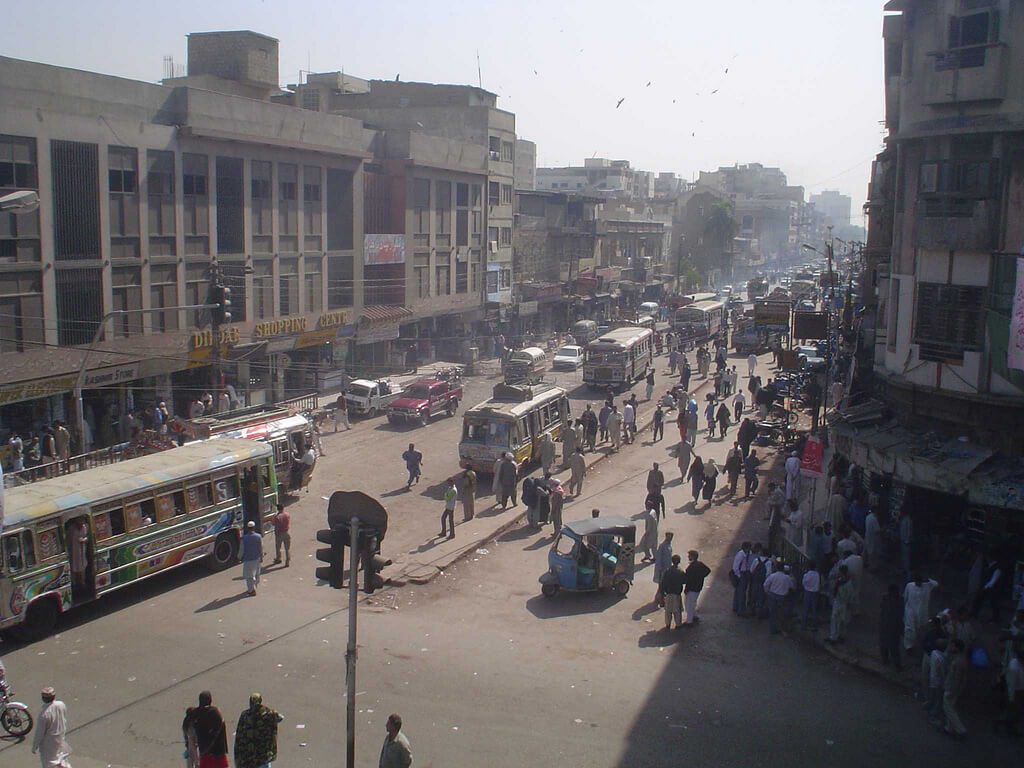
Photo: Wikimedia Commons
Karachi, Pakistan
In 2020, internationally acclaimed magazine Bloomberg identified the public transport of Karachi as the worst in the world. The report blames the ongoing corruption, mismanagement, and clashes of interest in improving public transport. ‘Omni buses’ are the only option to commute within the city and they are highly unsafe.[23]
Johannesburg, South Africa
Fifteen years after Johannesburg launched its state-of-the-art Bus Rapid Transit (BRT) network modelled on the network in Bogota, Colombia, it is struggling to cater to the public. Unveiled in 2009 on the cusp of the World Cup, Rea Vaya aimed at providing accessible, reliable and affordable public transport services for residents of Johannesburg and reduces the city’s C02 emissions.
But, the minibus taxi industry is still the most dominant mode of public transport in Johannesburg. As many as 85 percent of the trips made by collective transport (usually minibus or collective taxi) needed one or multiple changes (Matshiga, 2011). A lack of integrated fares between the different operators, meant transport costs accounted for a disproportionately high proportion of household budgets, especially hitting the poor who often had to make longer trips (as much as 40 per cent in some cases (Raboroko and Whitehead, 2009).[24]
“Given the rapid urban growth of the City of Johannesburg and systemic underinvestment, the city’s transportation system is now characterized by congestion and associated issues such as pollution, accidents, public transport decline, environmental degradation, climate change, energy depletion, visual intrusion and lack of accessibility for the urban poor,” find Rose Luke and Gert J Heyns, in the research paper ‘An analysis of the quality of public transport in Johannesburg.
Bristol, England
The city’s poor public transport has put commuters in a lurch. The authorities want a solution but cannot decide whether a tram network or underground mass transit system will solve the problem. The authorities began working on the much-criticised MetroBus scheme – which TfGB was set up in 2008 to campaign against – and in favour of a tram network. But, it has not got a good response.[25]
The city has been making efforts to reduce air pollution by making public transport free.

